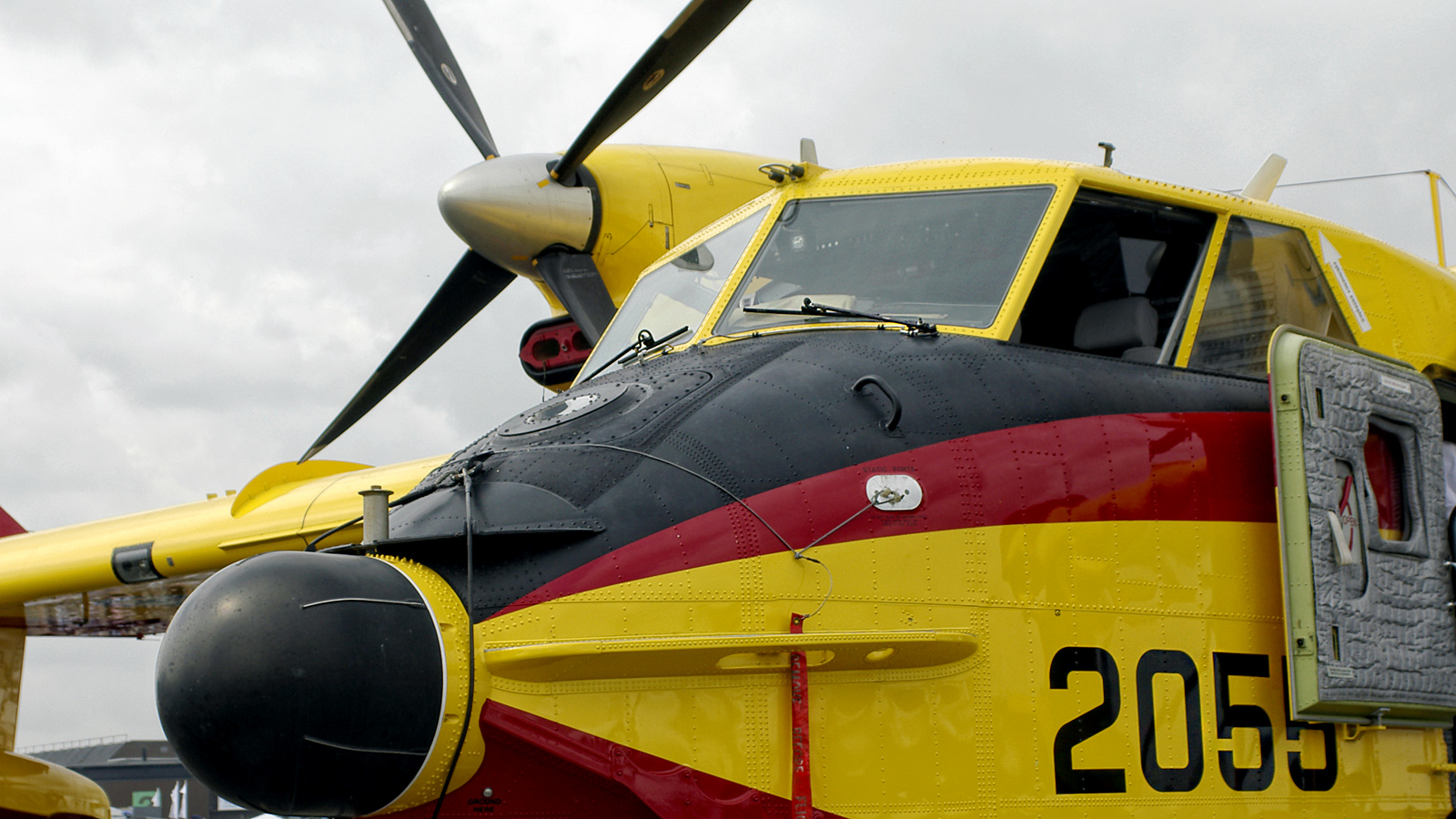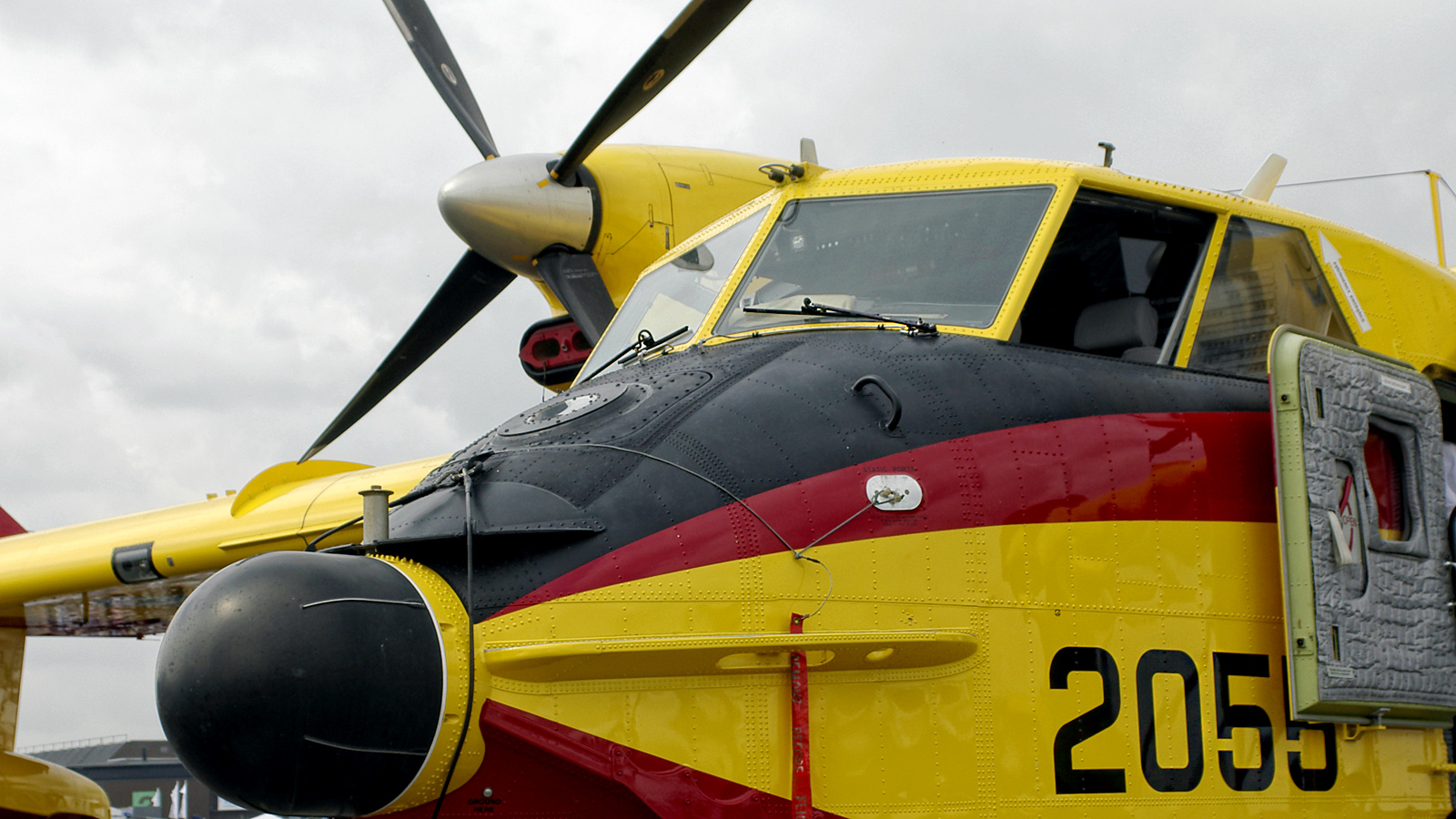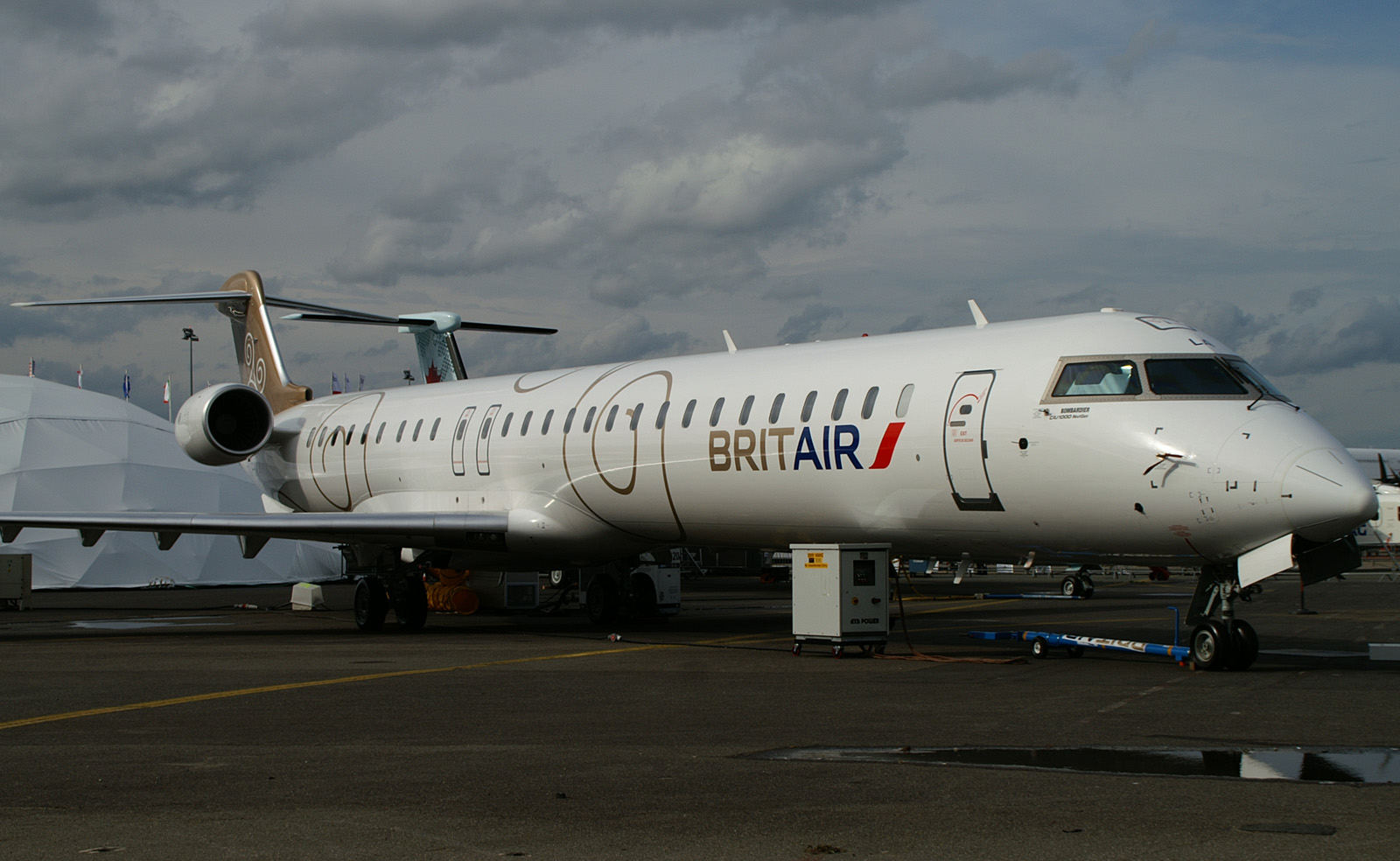
The Bombardier 415 (formerly Canadair CL-415) is a Canadian amphibious aircraft purpose-built as a water bomber. It is the only aircraft designed and built specifically for aerial firefighting and is based on the company’s CL-215 flying boat.
Developing nation: Canada.
Manufacturer/designer: Bombardier Aerospace.
Production line: Saint-Laurent, Quebec.
Number built: 83.
Type aircraft: amphibious aircraft purpose-built as a water bomber.
First flight:?December 6, 1993.
First delivery: November 1994.
The CL-215 aircraft received Transport Canada certification in March 1969 and the first customer delivery, to France, occurred three months later. One hundred twenty five aircraft were delivered throughout the years, and the final delivery, to Greece, occurred in May 1990. Sixty-four CL-215 amphibious piston aircraft remain in service.
The CL-215T aircraft is a CL-215 aircraft that was retrofitted with PW123AF turboprop engines using kit modifications and added improvements. Similar to the Bombardier 415 aircraft, it features enhanced aerial firefighting capabilities, powered flight controls and a new electrical system. A total of 17 CL-215T firefighter aircraft were converted and delivered, and 16 are currently in service. In the Fall of 2004, new conversion kits were offered, and in February 2006, seven orders were placed by the provinces of Alberta and Saskatchewan.
The Bombardier 415 aircraft is the latest in a long line of amphibious aircraft that were designed, manufactured and supported by Bombardier Aerospace.
Most of the fleet is still in service in firefighting operations. Since its launch in 1994, the Bombardier 415 aircraft has consistently proved itself to be a reliable and effective firefighting tool. The aircraft’s unique operational capabilities and exceptional performance allow it to operate in the most rugged and demanding of circumstances, and it is recognized around the world as the most effective firefighting aircraft available, said Michel Bourgeois, President, Bombardier Specialized and Amphibious Aircraft and Military Aviation Training.
Since the first Bombardier 415 amphibious aircraft delivery in 1994, a total of four
Bombardier 415MP and 71 Bombardier 415 aircraft have been delivered to governments and firefighting agencies in Croatia, France, Greece, Italy, Malaysia, Ontario, Quebec and Spain.
The Bombardier 415 firefighting aircraft has a normal cruise speed of 333 km/h (180 KT). In an average mission of six nautical miles (11 kilometres) distance from water to fire, it can complete nine drops within an hour and deliver 14,589 U.S. gallons (55,233 litres) of fire suppressant.
The aircraft is also being offered in a multi-purpose version, the Bombardier 415MP aircraft, which can be used in a variety of specialized missions, such as search and rescue, environmental protection, coastal patrol and transportation. Two Malaysian Bombardier 415 aircraft and one Greek Bombardier 415 aircraft are currently equipped with the MP configuration.
General characteristics
- Crew: 2 pilots
Additional Seating: 1 on jump seat, 8 on bench seats - Payload: 2,900 kg (6,400lb)
- Length: 19.82 m (65 ft)
- Wingspan: 28.6 m (93 ft 11 in)
- Height: 8.9 m (29 ft 3 in)
- Wing area: 100 sq m (1,080 sq ft)
- Empty weight: 12,880 kg (28,400 lb)
- Maximum fuel weight: 4,650 kg (10,250 lb)
- Maximum takeoff weight (from land, disposable load): 19,890 kg (43,850 lb)
- Maximum takeoff weight (from land, non-disposable load): 18,600 kg (41,000 lb)
- Maximum takeoff weight (from water): 17,170 kg (37,850 lb)
- Maximum weight after scooping: 21,360 kg (47,000 lb)
- Maximum landing weight: 16,780 kg (37,000 lb)
- Powerplant: 2x Pratt & Whitney Canada PW123AF turboprop, takeoff power: 2,380 shp (1,775 kW) each
Performance
- Maximum speed: 377 km/h (223 mph,194 kt)
- Cruise speed: 333 km/h (207 mph, 180 kt)
- Stall speed: 126 km/h (78 mph, 68 kt)
- Range: 2,443 km (1,518 miles)
- Service ceiling: 4,500 m (14,700 ft)
- Rate of climb: 8.1 m/s (1,600 ft/min)
- Takeoff distance (ISA, land): 840 m (2,750 ft)
- Takeoff distance (ISA, water): 815 m (2,670 ft)
- Landing distance (ISA, land): 675 m (2,210 ft)
- Landing distance (ISA, water): 665 m (2,180 ft)
- Minimum water depth: 1.8 m (6 ft)
Avionics
- Honeywell Primus 2 Radio Navigation
- RNZ-850 with ADF, VOR/ILS/Marker Beacon and DME
- Litef/Honeywell LCR93, Attitude and Heading Reference System
- Honeywell EDZ-605 EFIS with Dual EADI and EHSI
- Radio Altimeter (Honeywell AA-300)
- Parker-Gull Three-tube Active Matrix LCD Integrated Instrument Display System
- Dual CIC/Aerosonics Air Data Computers
- Dorne & Margolin ELT-8 Emergency Beacon
In-service Aircraft December 2009 |
|||||
Country |
215 |
215T |
415 MP |
415 |
Total |
| France | 12 | 12 | |||
| Greece | 13 | 1 | 7 | 21 | |
| Italy | 19 | 19 | |||
| Italy, Privately owned | 5 | 5 | |||
| Spain | 5 | 14 | 3 | 22 | |
| Spain, Privately owned | 2 | 2 | |||
| Turkey | 5 | 5 | |||
| Croatia | 6 | 6 | |||
| USA, North Carolina | 1 | 1 | |||
| USA, Minnesota | 2 | 2 | |||
| USA, Privately owned | 3 | 3 | |||
| Malaysia | 2 | 2 | |||
Canada |
? |
||||
| Alberta | 3 | 1 | 4 | ||
| Manitoba | 7 | 7 | |||
| Newfoundland | 6 | 6 | |||
| N.W.T. | 4 | 4 | |||
| Ontario | 9 | 9 | |||
| Quebec | 4 | 2 | 8 | 14 | |
| Saskatchewan | 6 | 6 | |||
| Total | 66 | 17 | 3 | 64 | 150 |
Photos: Rob Vogelaar / Marcel van Leeuwen, ZAP16 Group






Be the first to comment